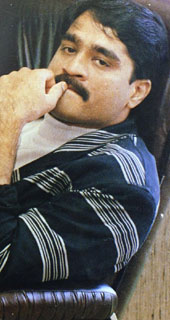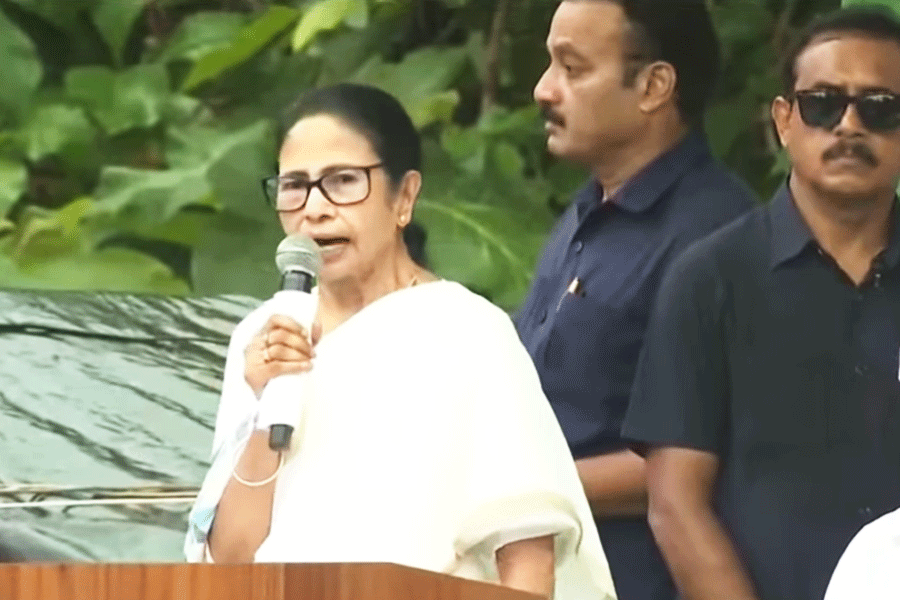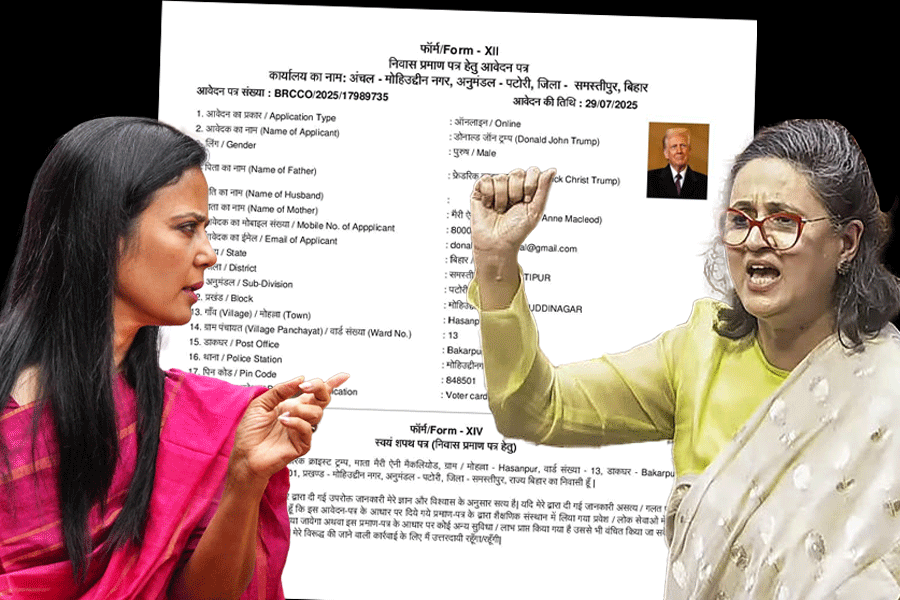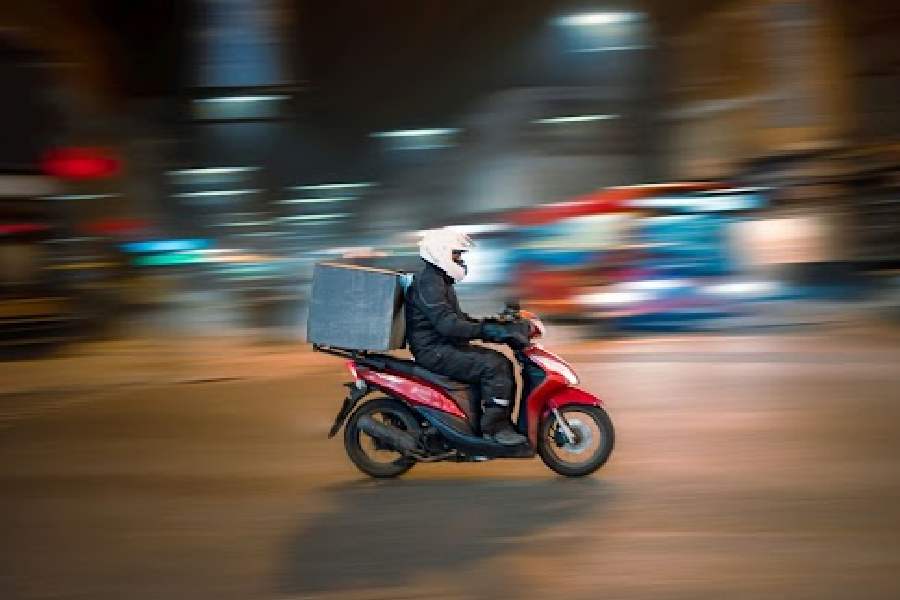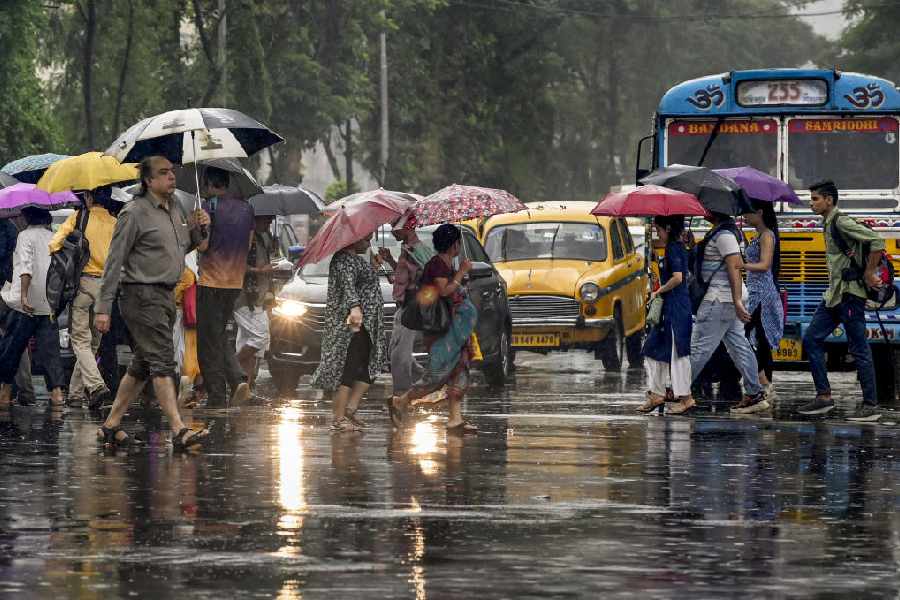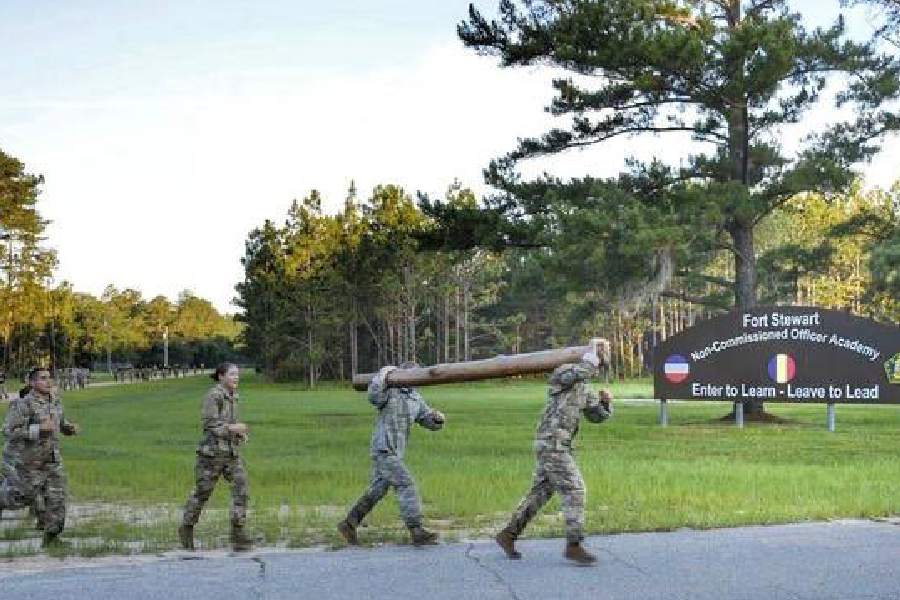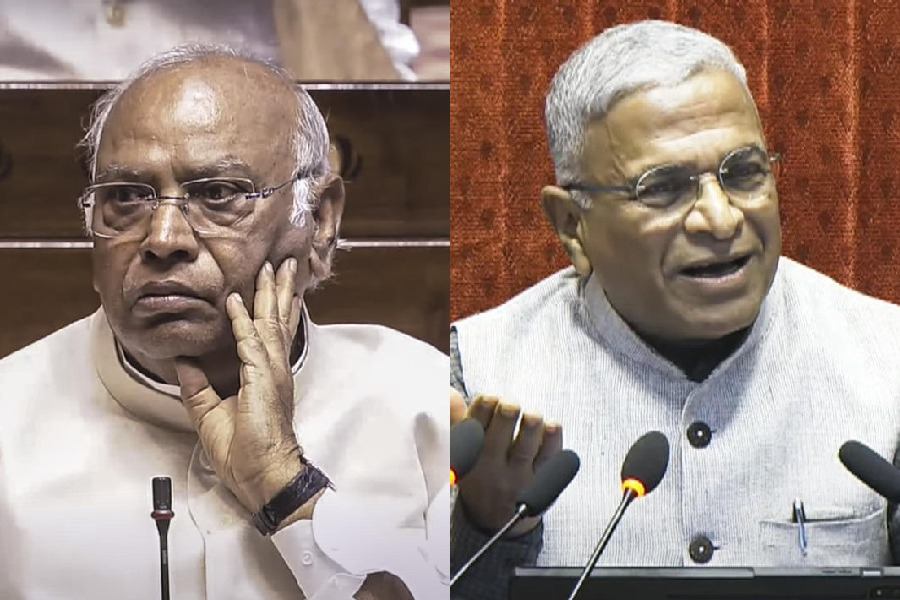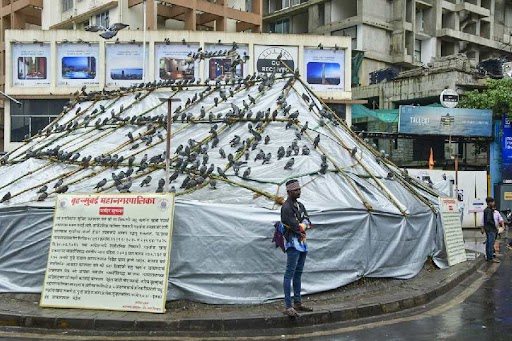|
|
Dubai se call aaya hai kya?? jests actor Chunky Pandey as an errand boy passes a waiting call to Vishram Sawant, the debutant director of the soon-to-be released film, D. There is an atmosphere of good cheer at Ram Gopal Varma’s production unit, The Factory. Pandey, one of the actors in the film, hastens to add that ?Dubai? is a reference to their boss, Varma, and everybody breaks into laughter.
D is a prequel to Varma’s last gangland movie, Company. After the release of Company, Varma was looking to do a movie on the making of Malik, the film’s protagonist ? a don played by Ajay Devgan.
Varma is in an expansive mood. ?D’s chief character hails from a lower middle-class background. He desires wealth and the lifestyle it promises. His single-point agenda is to redefine his circumstances,? he says. ?He is a thinker and a strategist. And he runs his underworld operations like a shrewd businessman.?
While the film, roughly modelled on the don’s life, will mount the marquee next month, let’s face it, the real story has been around for many years now. In the bylanes of Pakmodia Street, Mumbai, a police constable’s son started out as a dock thief at Mazagaon Docks in the early Seventies, waged a bloody war to be the king of the Mumbai underworld, and then turned international fugitive with his corporatised crime empire spreading across continents. But, in the last seven years, the dynamics of the underworld, the multi-pronged strategies used by the Mumbai police, and the US crackdown post-9/11 have sobered down the terror that once meant Dawood Ibrahim.
The statistics say it all. The anti-extortion cell of the Mumbai police traced just two cases of extortion to the Dawood gang out of the 65 reported this year. In 1998, the figure was as high as 121. ?We cannot say that Dawood’s activities are over. But, we can say that he is not as active and we have succeeded in curbing his influence radically,? says a crime branch official.
Quite possibly, one indication of Dawood’s waning importance is the fact that a director can actually envisage making a film that is loosely based on the don’s life. Varma stresses that his film is fictional, but adds that ?such stories? always have reference points to consider. ?If I were to make a film on a dacoit who lives in a jungle, I’d have Veerappan at the back of my mind, or if I were to do a film on a cricketing superstar, who else but Sachin Tendulkar would be on my mind?? he says. And, it is clear that the ready reference point here is Dawood Ibrahim Kaskar.
|
|
Ask no questions
Of course, Dawood ? the mastermind of the 1993 Bombay blasts ? is a name that still spreads a fair amount of panic in some quarters of Mumbai. Residents along the bustling bazaars on Pakmodia Street duck any questions asked about the don. Nobody directs you to a Dawood property on the street when asked for directions, though everyone in these bylanes knows the addresses owned by the D Company boss. The income tax department organises a routine annual auction of 10 Dawood benami properties worth crores of rupees, but there are no takers yet.
But what is equally clear is that the name is no longer another word for terror. The don had, in fact, more or less been eased out of the headlines, till the Dawood connection surfaced in a recent criminal case involving two gutkha kings, Rasiklal Dhariwal of Manikchand gutkha and J.M. Joshi of Goa gutkha.
But, clearly, Mumbai 2005 is not the city of 1997, when T-Series owner Gulshan Kumar was shot dead after he refused to pay up. Mumbai witnessed an unprecedented fear psychosis triggered by underworld outfits. It affected not only the glamorous film industry, but also builders, diamond merchants, and even professionals such as doctors. Telephonic threats and gangland shootouts were a daily occurrence. The wealthy cancelled marriages or any excessive show of their prosperity lest the underworld got wind of it.
Under attack from all quarters, the Mumbai police tightened its belt and took the underworld outfits head on. The police believe that a multi-pronged approach targeted not just the gangsters, but the entire chain of operations which included financiers, legal advisors and gun suppliers. Special squads of police officers who came to be known as ‘encounter specialists’ were ordered to ferret out gangsters and shoot them dead. Nearly 300 gangsters owing allegiance to Dawood, Chhota Rajan, Arun Gawli, and Amar Naik were killed in three years. The gangland shootouts dropped from 100 in 1998 to 41 in 1999, 24 in 2000, and just 12 in 2002.
Dwindling numbers
The underworld lost its key henchmen. Arun Gawli, a former don-turned-independent MLA, lost key associates such as Sada Pawale, Ganesh Bhosale, Vijay Tandel, Sharad Bandwe and Bandya Adivarekar in encounters. Chhota Rajan’s associates ? including Vinod Matkar and Taufiq Kalia ? were gunned down. Rajan lost his closest aide, Rohit Verma, when Dawood’s hit squad attacked him in a Bangkok apartment. Dawood’s close associates, Babloo Shrivastava from Delhi and Muthappa Rai from Bangalore, were arrested. The Portugal police nabbed a top member of his gang, Abu Salem, with girlfriend Monica Bedi. His right-hand man Sharad Shetty was shot dead by Rajan’s men in Dubai in January 2003.
The underworld is under attack, but some believe that it would still be na?ve to assume that Dawood Ibrahim is a shadow of his former self. S. Husain Zaidi, senior journalist and the author of the controversial book, Black Friday, prefers to look upon the lack of the don’s apparent presence on the streets as a result of the possibility that he may have moved to operating his businesses in a discreet manner. ?He is still in touch with key people in the city. He makes at least eight to 10 phone calls everyday, and has his lieutenants carry out his orders,? says Zaidi.
Dawood’s syndicate dabbles in everything ranging from cricket betting, arms supply, narcotics trade, film-financing, real estate and gutkha manufacturing. Extortion money formed a negligible amount in Dawood’s black balance sheet, but it is an exercise that aims at striking fear among prospective targets.
But many believe that Dawood’s hold over Mumbai has been slackening in the aftermath of 9/11, when the US State Department included Dawood Ibrahim in its list of the most wanted. The US intelligence agencies believe that Dawood has close links with Osama Bin Laden, and outfits like Lashkar-e-Toiba.
In Mumbai, too, the administration has been active. The police followed a new law ? the Mumbai Control of Organised Crime Act (MCOCA) ? which made bail difficult to obtain, and used the Maharashtra Prevention of Dangerous Activities Act (MPDA) to devastating effect. In 1997, 144 gangsters were detained under MPDA. In 1999, 642 gangsters were rounded up for preventive detention. The arms supply was curtailed by increasing seizures. In 1998, 426 arms were seized, in 1999, the figure went up to 523.
The police did not stop at that. The then police commissioner, M.N. Singh, and minister of state for home Kripa Shankar Singh even travelled to Azamgarh in Uttar Pradesh ? a region that has spawned a number of Dawood gangsters, including associate Abu Salem ? to explain to the local population that the underworld lure of easy money was fatal. Gradually, the police believe, recruitment slowed down.
?The underworld is a hydra-headed monster and mere police encounters would not have helped control it. We nearly spent Rs 1 crore in the secret service fund to pay for good, credible intelligence on underworld activities,? says a senior police official who does not wish to be named.
The heat is on
Electronic surveillance also played a key role in breaking the back of Dawood’s gang, which moved its base from the safe haven of Dubai to Karachi in Pakistan just before India signed an extradition treaty with the UAE. ?We monitored the foreign telephone numbers of underworld outfits. It helped us gather crucial evidence and prevent the underworld’s actions,? says the officer. A number of planned attacks on film personalities such as producer Pahlaj Nihalani, actor Aamir Khan and filmmaker Ashutosh Gowariker were foiled by the police, apparently based on this intelligence. Telephone surveillance formed the key evidence in the Bollywood-underworld nexus case in which diamond merchant Bharat Shah was charged with alleged underworld links.
Dawood may be feeling the heat. A few years ago, he appealed to the Indian authorities that he was willing to face trials in the country in return for an assurance that he would not be killed in a police encounter. Even in February, when the Delhi police had arrested Kamal Kishore Chadha, a long-time associate of Dawood’s drug network from a Defence Colony house, he told them that the Pakistan-based don still hoped to return to India.
Dawood’s brother Iqbal Kaskar returned to India in February 2003 in a surprisingly swift extradition. The police intelligence indicated that Kaskar’s return was part of a plan to slowly bring Dawood’s immediate family, including his wife and children, back to Mumbai.
In Pakmodia Street, though, people dread the return of Dawood. Men scuttle by nervously when asked about its famous former resident. ?Maloom nahi bhai,? they say.

